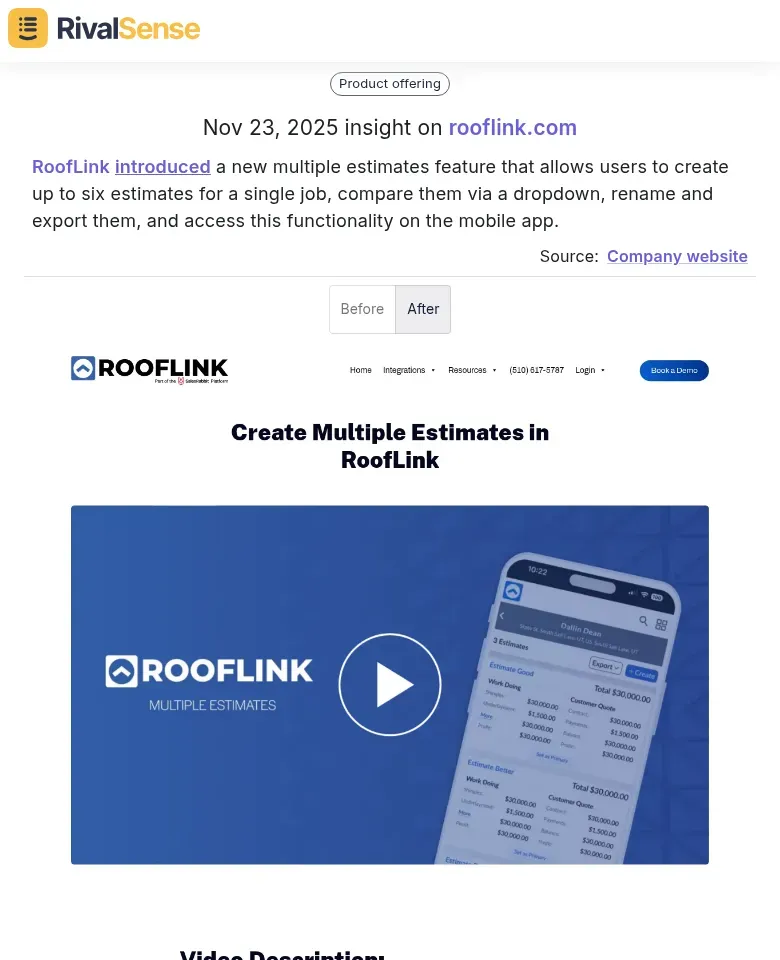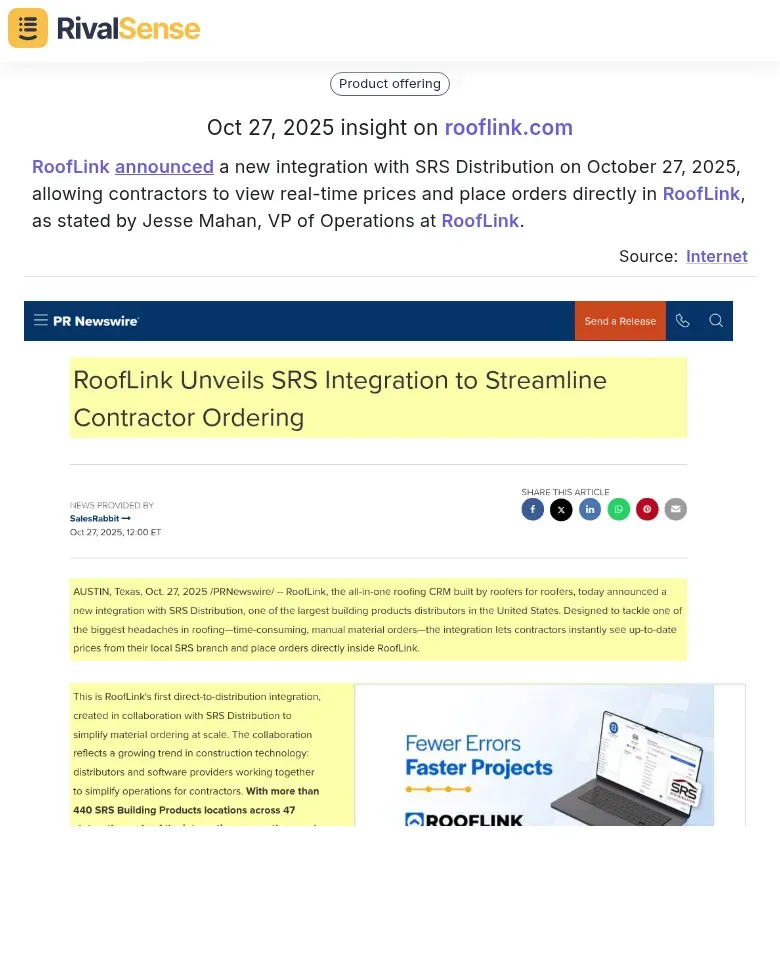Key Account Engagement Checklist for Roofing CRM Success
Key account engagement is the strategic process of building and maintaining strong relationships with your most valuable roofing clients—those who provide recurring business, high-value projects, or referrals. For roofing companies, these accounts are the lifeblood of sustainable growth, driving revenue stability and long-term success. A roofing CRM transforms this engagement by centralizing client data, tracking interactions, and automating follow-ups, ensuring no opportunity is missed. By leveraging CRM tools, you can personalize communication, monitor project timelines, and proactively address client needs, turning one-time jobs into loyal partnerships. This systematic approach not only enhances customer satisfaction but also boosts retention and referral rates. In this section, we’ll explore a practical checklist to optimize key account engagement, linking each step directly to business growth—from initial contact to post-project follow-up. Start by identifying your top 20% of clients based on revenue and potential, then use your CRM to set reminders for regular check-ins and service reminders. This foundation sets the stage for the detailed strategies ahead, helping you turn engagements into enduring successes.
Leveraging Advanced CRM Features for Better Engagement
Advanced CRM features are essential for deepening relationships with your key accounts and staying competitive in the roofing industry. By utilizing tools like multiple estimates and mobile access, you can provide a seamless client experience that sets you apart. For example, RoofLink introduced a new multiple estimates feature that allows users to create up to six estimates for a single job, compare them via a dropdown, rename and export them, and access this functionality on the mobile app. This insight is valuable because it demonstrates how offering flexible options can enhance client engagement, improve decision-making, and increase conversion rates by catering to diverse client preferences.

To implement similar strategies, follow these practical steps:
- ✅ Train your team on creating varied estimates: Develop 2-3 options per project (e.g., basic, premium, custom) to give clients flexibility and clear comparisons.
- ✅ Mandate mobile app usage for on-site updates: Enable real-time access to update job statuses, send photos, and respond to client queries instantly from the field.
- ✅ Set up automated export templates: Use export and renaming tools to streamline workflows—for instance, export estimates to PDF and rename files with client-project details for easy tracking.
This approach not only boosts efficiency but also builds client trust through transparent and responsive communication.
Integrating Systems for Seamless Operations and Engagement
System integrations are a game-changer for operational efficiency and client satisfaction in the roofing business. By connecting your CRM with external platforms, you can automate processes and provide real-time updates that keep key accounts informed and engaged. A recent example is RoofLink's announcement of a new integration with SRS Distribution on October 27, 2025, allowing contractors to view real-time prices and place orders directly in RoofLink, as stated by Jesse Mahan, VP of Operations at RoofLink. This insight is valuable because it highlights how seamless integrations can reduce procurement delays by 60-80%, enhance transparency in pricing, and strengthen client relationships through faster, more accurate operations.

To achieve similar benefits, follow this actionable checklist:
- ✅ Audit your current supplier relationships: Identify which suppliers offer API-compatible systems for easy CRM integration.
- ✅ Choose CRM plugins that support API connections: Opt for tools that integrate with major roofing material vendors to enable instant ordering and pricing updates.
- ✅ Train teams on using integrated systems: Ensure staff can efficiently place orders and track statuses within the CRM to minimize errors and delays.
- ✅ Establish protocols for handling delays: Create clear steps for communicating supplier-side issues to clients, maintaining trust and transparency.
- ✅ Implement weekly system health checks: Regularly verify data accuracy and integration functionality to prevent disruptions.
This integration transforms reactive account management into proactive partnership building, ensuring smoother project workflows and higher client retention.
Strategic Partnerships and Industry Involvement
Strategic partnerships and industry involvement are vital for expanding your network and enhancing key account engagement in the roofing sector. Staying aware of competitor activities in this area can provide valuable insights for your own growth strategy. For instance, RoofLink will sponsor the SRC Summit as a silver sponsor on February 10–11, 2026. This insight is valuable because it underscores how event sponsorships can increase brand visibility, foster industry connections, and attract high-value clients through targeted exposure.

To maximize your impact, use this practical checklist:
- ✅ Sponsor industry events: Select high-impact roofing trade shows and conferences, set measurable goals (e.g., 50 new leads), and use your CRM to track interactions and follow up with personalized messages post-event.
- ✅ Align with major distributors: Partner with top suppliers to offer exclusive discounts or early product access to your CRM users, documenting benefits in your CRM for easy reference to boost loyalty and retention.
- ✅ Gather insights from partnerships: Regularly meet with partners to discuss market trends, such as material shortages or regulations, and use CRM data to analyze client behavior and adjust engagement strategies proactively.
Tips: Prioritize events with your target audience, negotiate win-win terms with distributors, and schedule quarterly reviews to refine partnerships. This approach builds visibility, strengthens relationships, and keeps you ahead in the competitive roofing market.
Building a Comprehensive Engagement Checklist
A well-defined engagement checklist is crucial for consistently delivering exceptional service to your key accounts. By systematizing your approach, you can ensure that no detail is overlooked and every client interaction is optimized for satisfaction and retention. Start with a structured onboarding process to set the tone for long-term relationships and use your CRM to automate and track each step for efficiency.
Follow this comprehensive checklist to build and maintain strong key account engagement:
- ✅ Onboarding process: Create a welcome package, assign a dedicated account manager, and schedule a kickoff meeting within 48 hours of signing. Use your CRM to set up client profiles, log initial project details, and automate follow-up reminders for tasks like contract signing and deposit collection.
- ✅ Regular communication protocols: Implement weekly status updates via email or CRM notifications, and schedule bi-monthly check-in calls to discuss progress and address concerns. Set up feedback mechanisms—such as post-project surveys or quick rating prompts in your CRM—to gather insights on client satisfaction and adapt to preferences.
- ✅ Monitor engagement metrics: Track key indicators like response times, meeting attendance rates, and project milestone completions in your CRM. Analyze this data to identify trends—for example, if clients with frequent communication have higher retention—and adjust strategies by increasing touchpoints or personalizing communications if metrics show low engagement.
- ✅ Regularly review and update the checklist: Conduct monthly or quarterly audits of your engagement processes to refine them based on performance data and client feedback, ensuring long-term loyalty and project success.
By embedding this checklist into your daily operations, you’ll foster resilient relationships that drive sustainable growth.
Conclusion: Sustaining Long-Term Success with Your CRM
In summary, your roofing CRM success hinges on a disciplined engagement checklist: regular client communication, proactive issue resolution, personalized service offerings, and systematic feedback collection. These elements ensure you not only meet but exceed client expectations, fostering loyalty and repeat business. However, the real key to long-term success lies in continuous improvement and adaptation. Client relationships evolve, and so should your strategies—regularly review CRM data to identify trends, adjust your approach based on feedback, and stay agile in a competitive market. To sustain growth, implement these strategies today: set up automated reminders for follow-ups, conduct quarterly client satisfaction surveys, and train your team on CRM best practices. By embedding this checklist into your daily operations, you’ll build resilient relationships that drive sustainable growth and keep your business ahead of the curve.
To gain competitive insights like the examples shared and stay updated on industry moves, try RivalSense for free at https://rivalsense.co/ and get your first competitor report today!
📚 Read more
👉 Product Offering Competitor Analysis: Template & Framework
👉 Leveraging Competitor Executive Changes for Strategic Insights
👉 The Ultimate Guide to Key Account Management Assessment: Driving Growth Through Strategic Evaluation
👉 Case Study: Competitor Backlink Tracking Drives Strategic Vision
